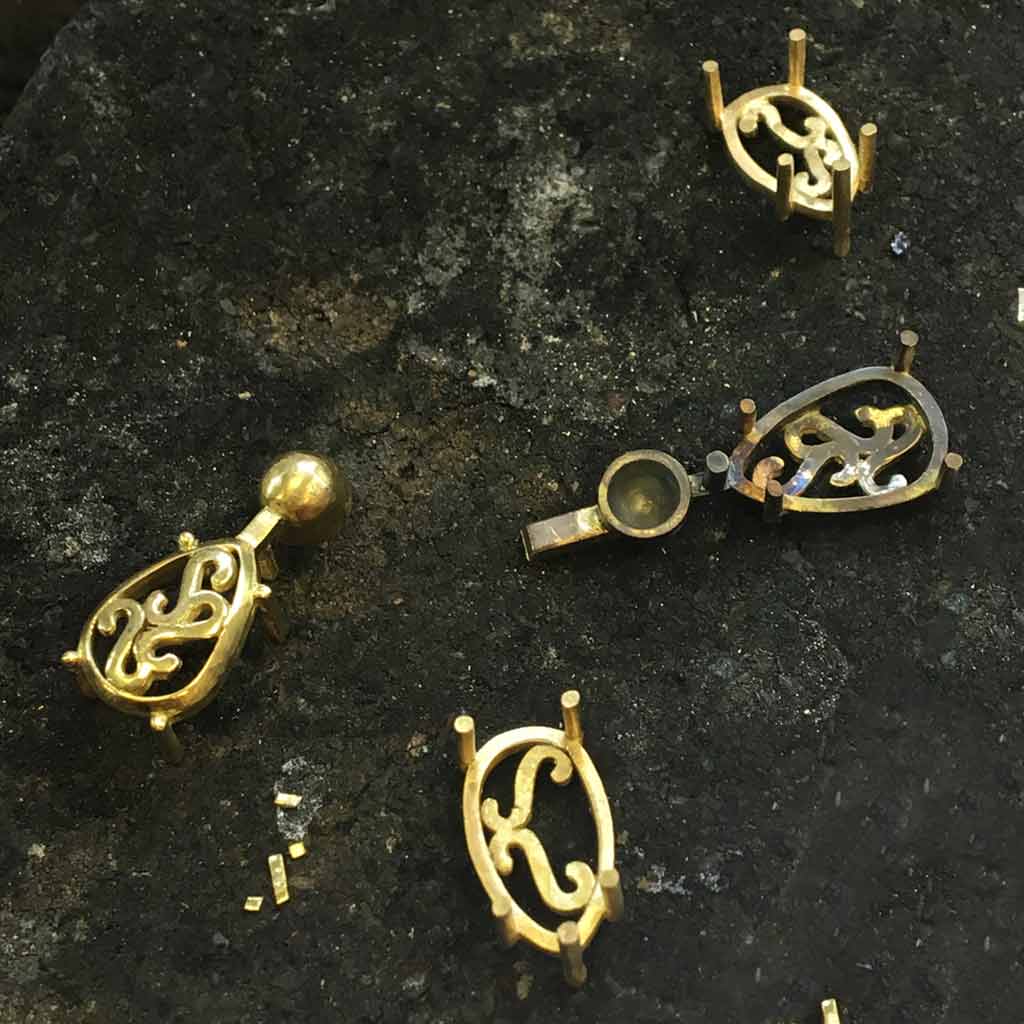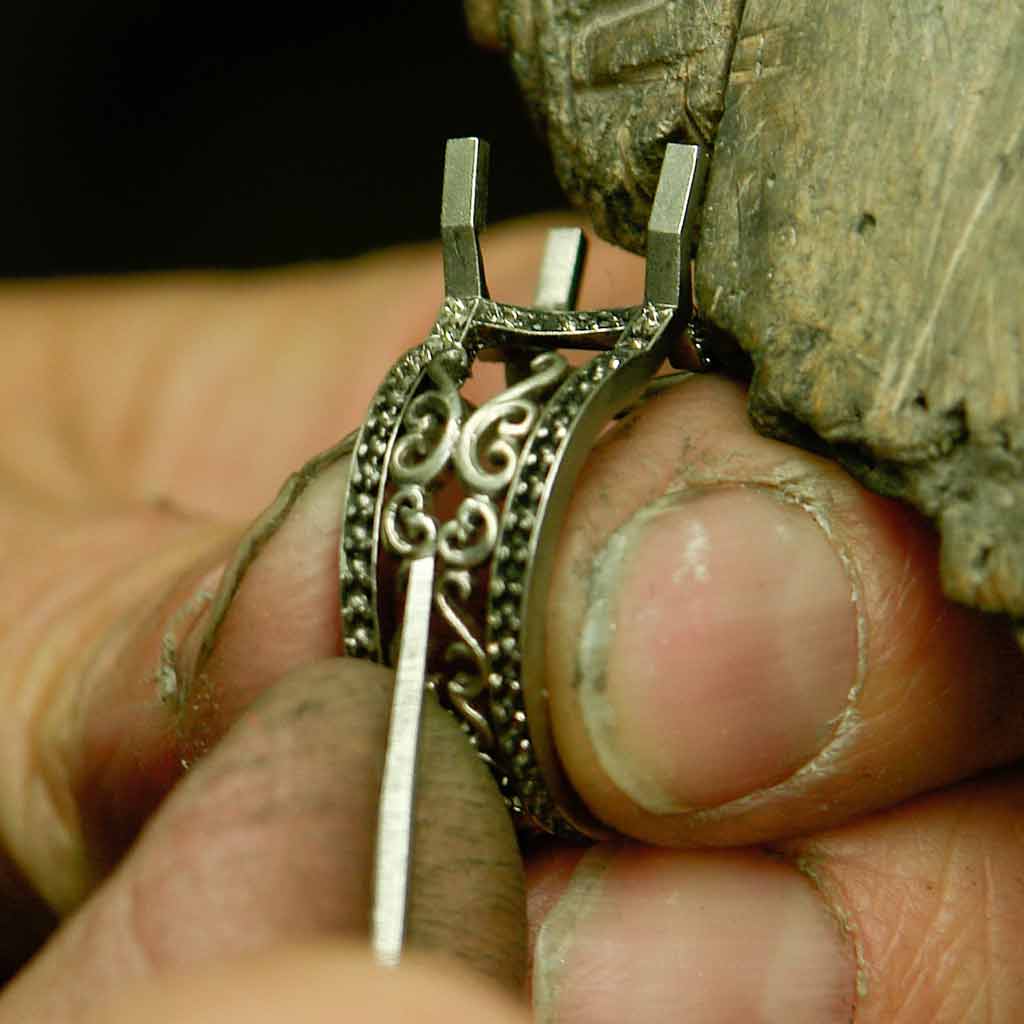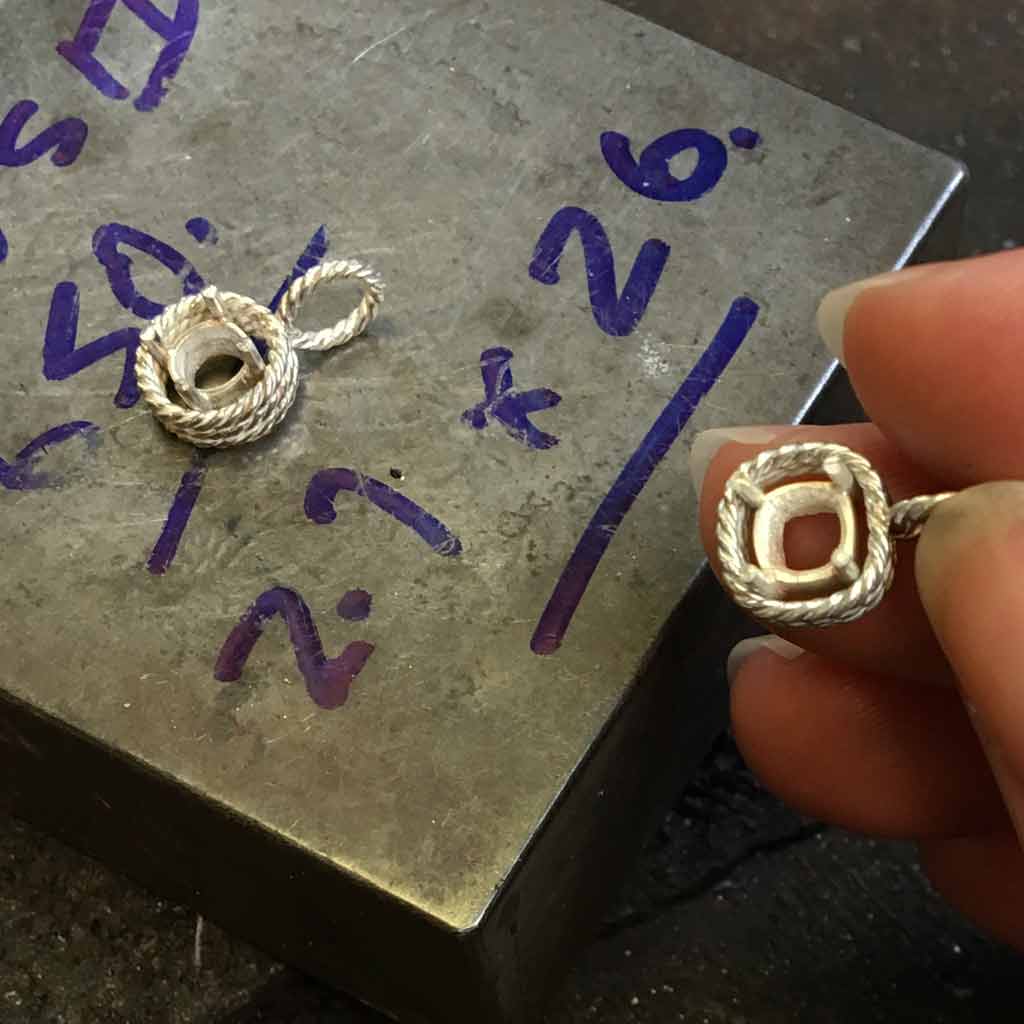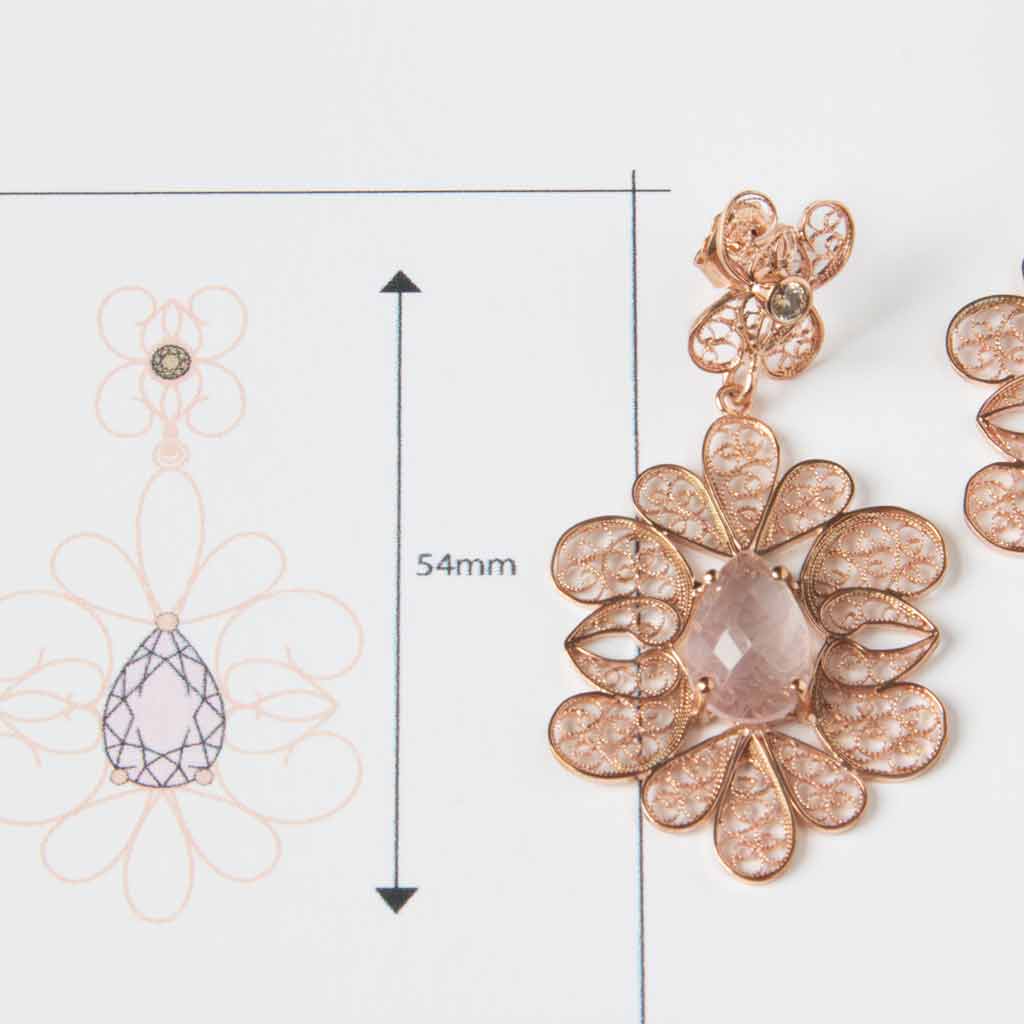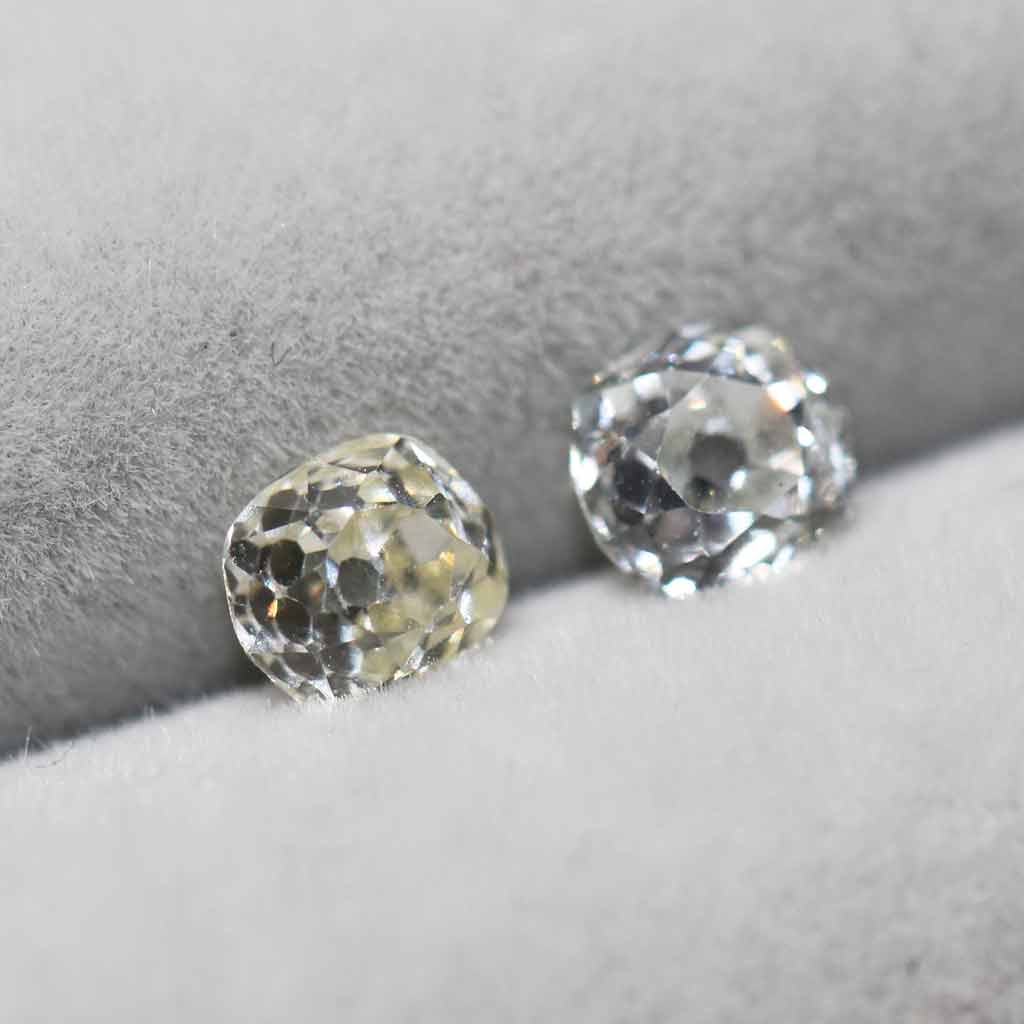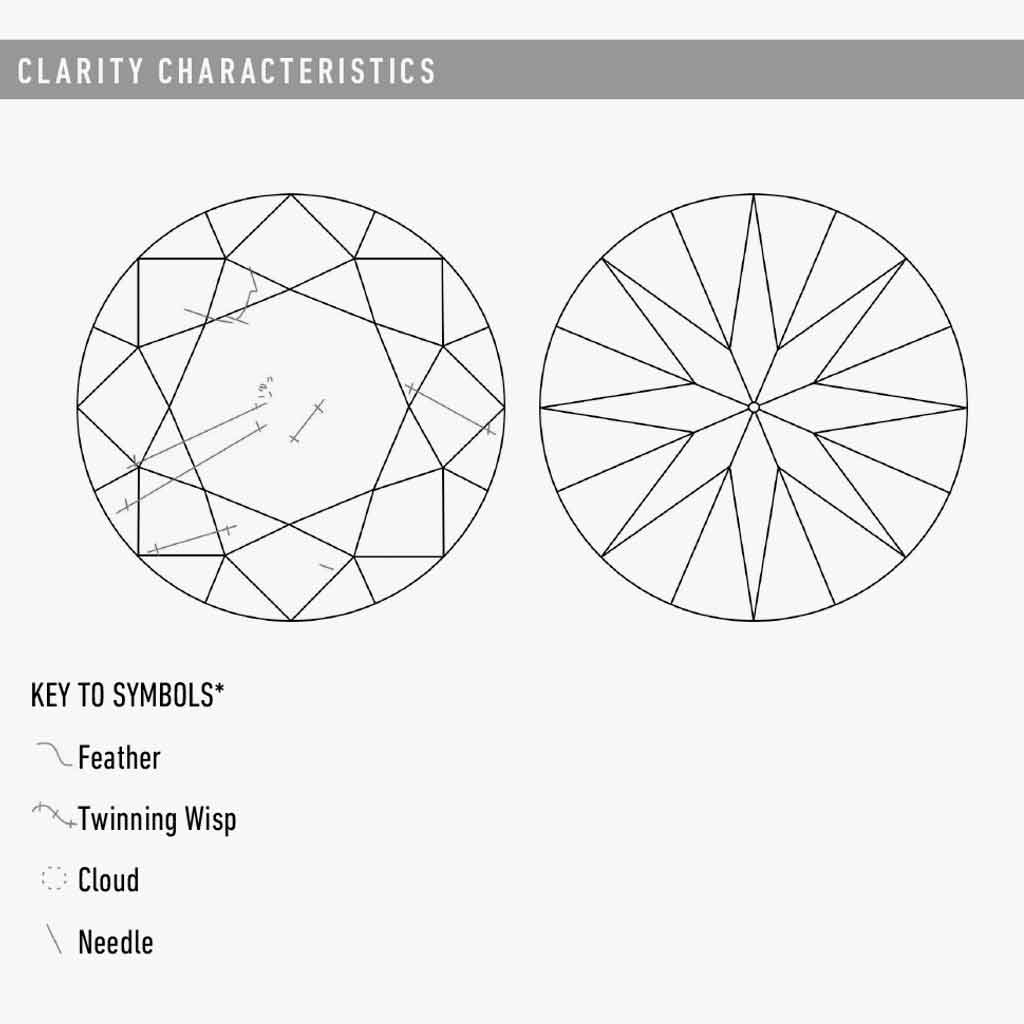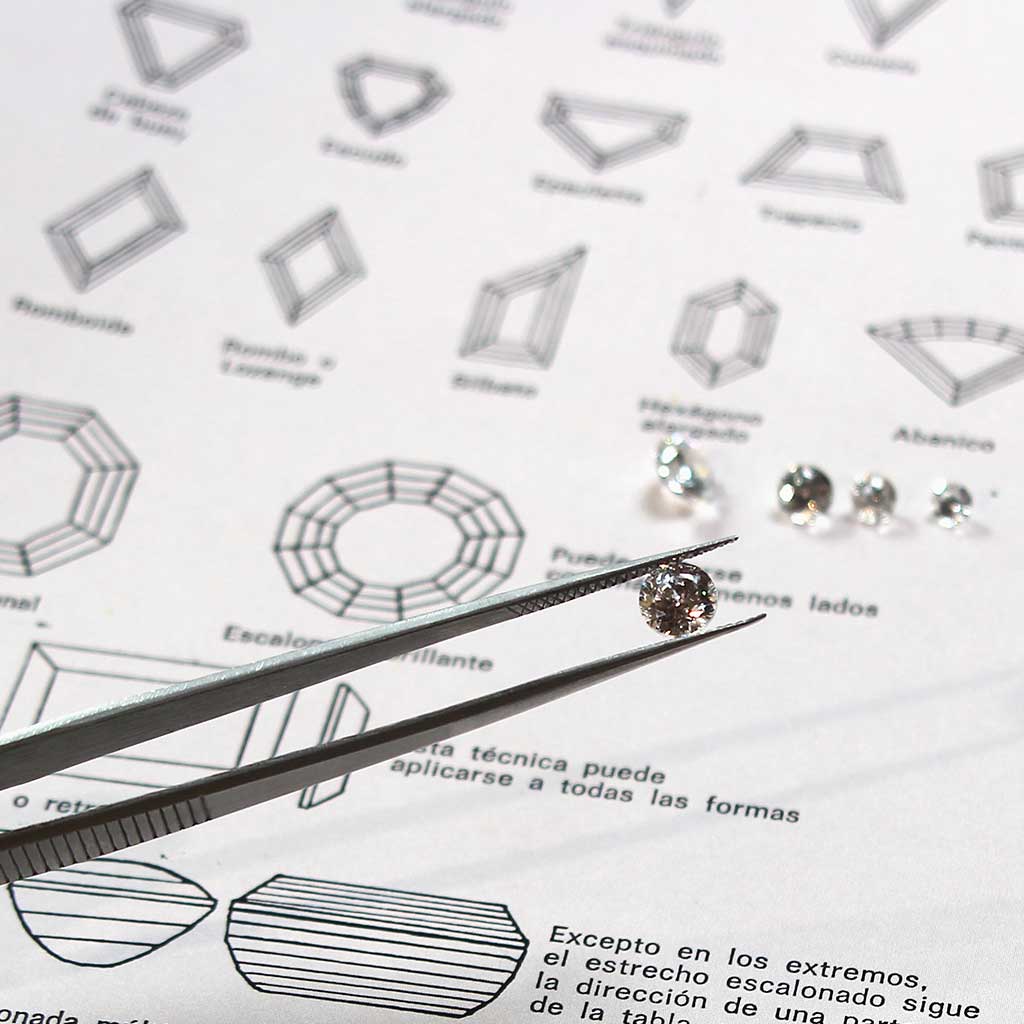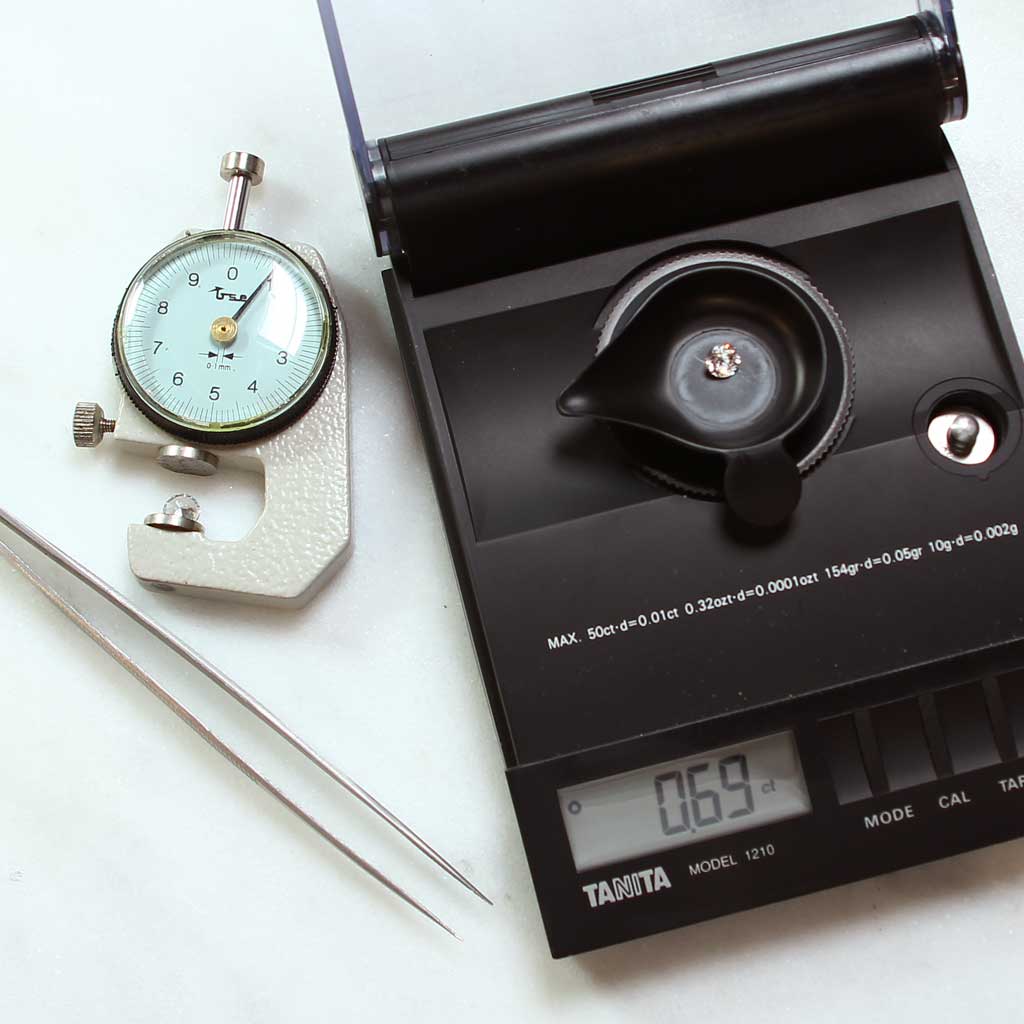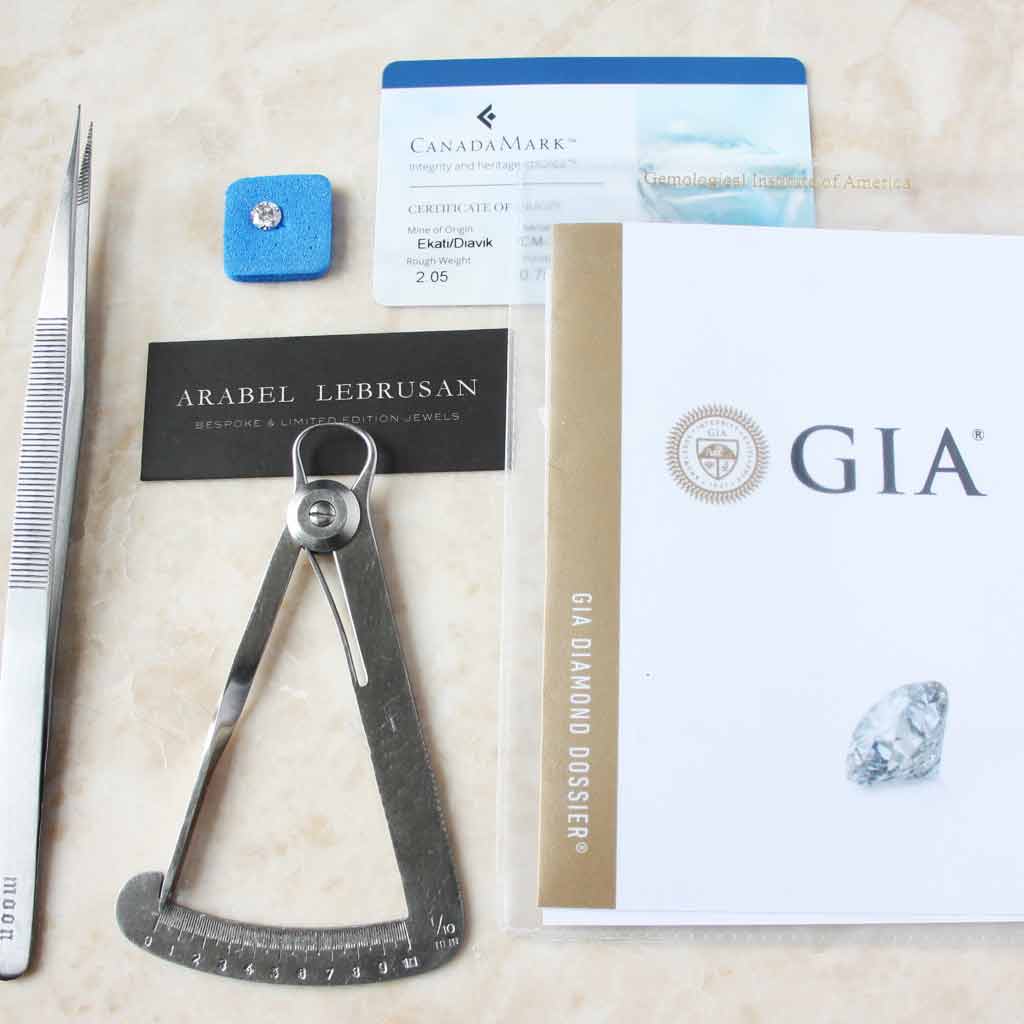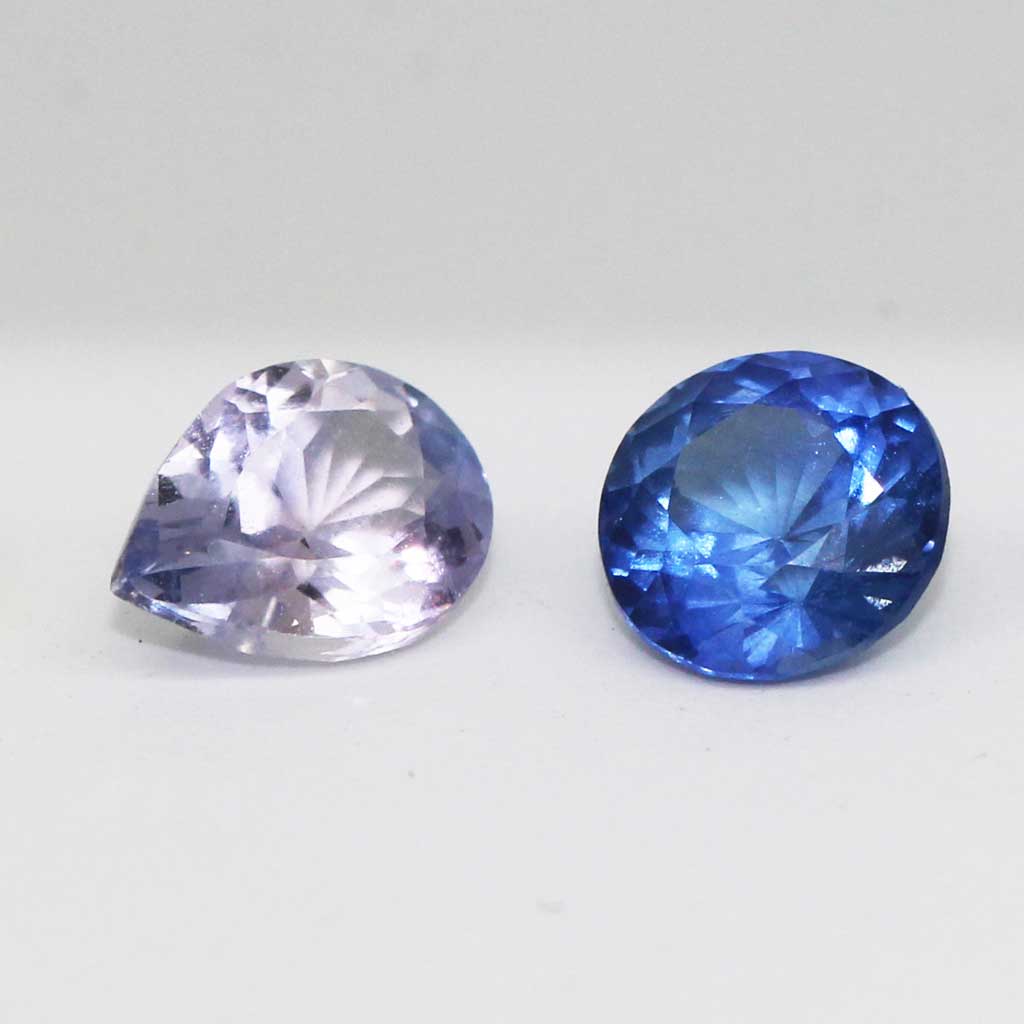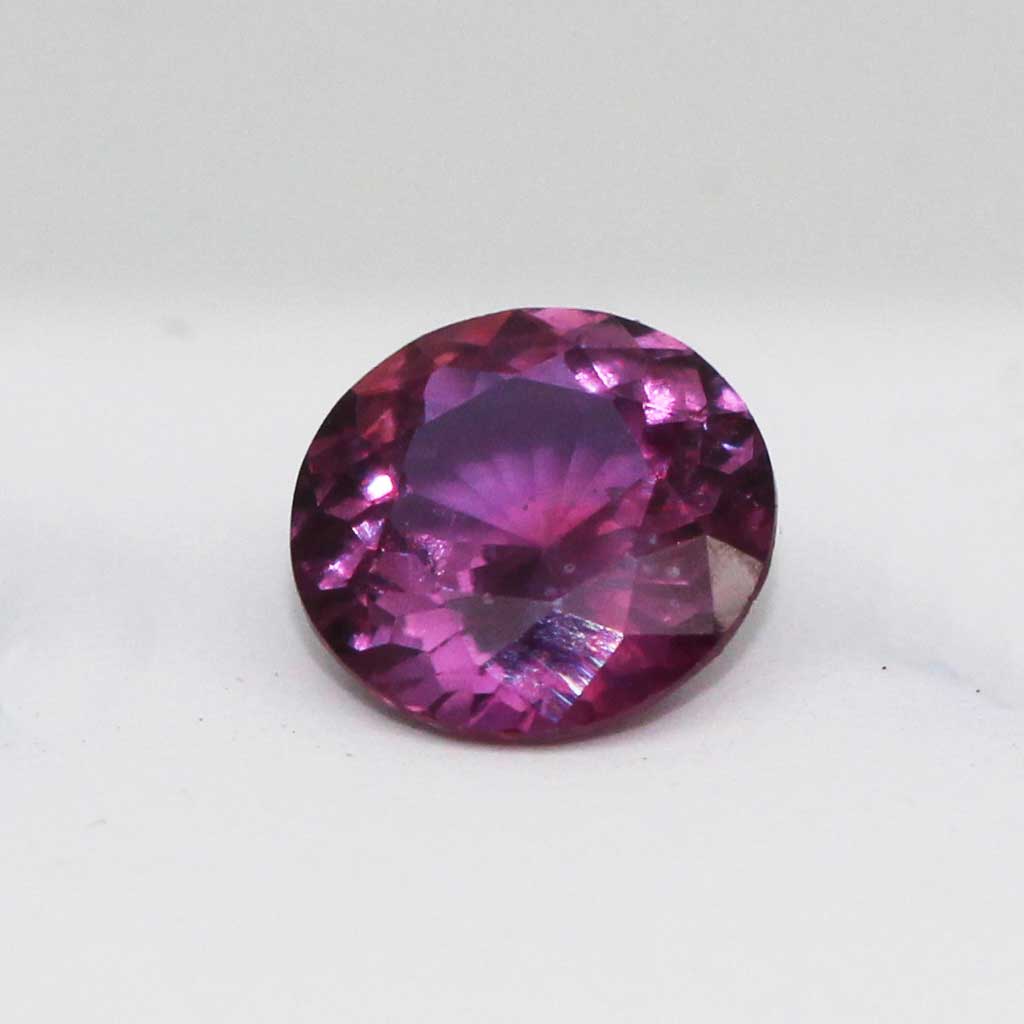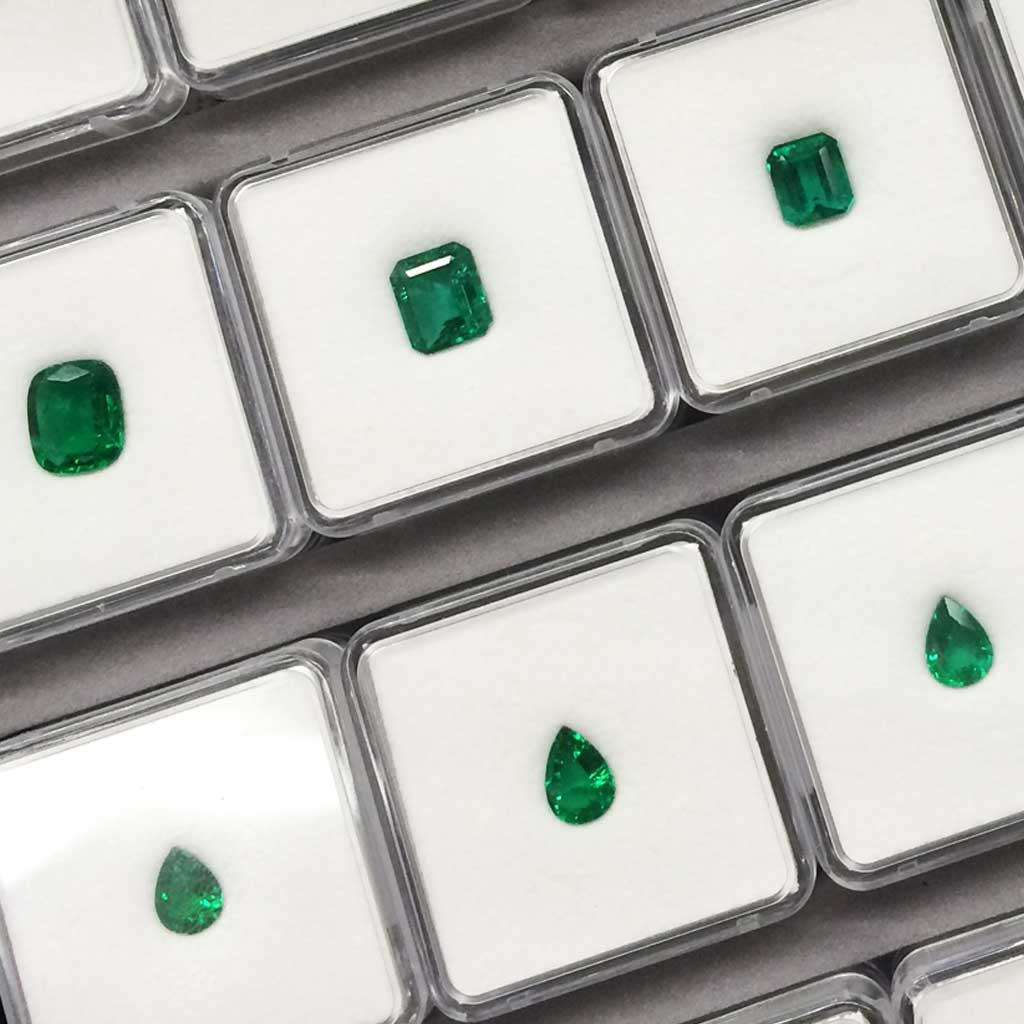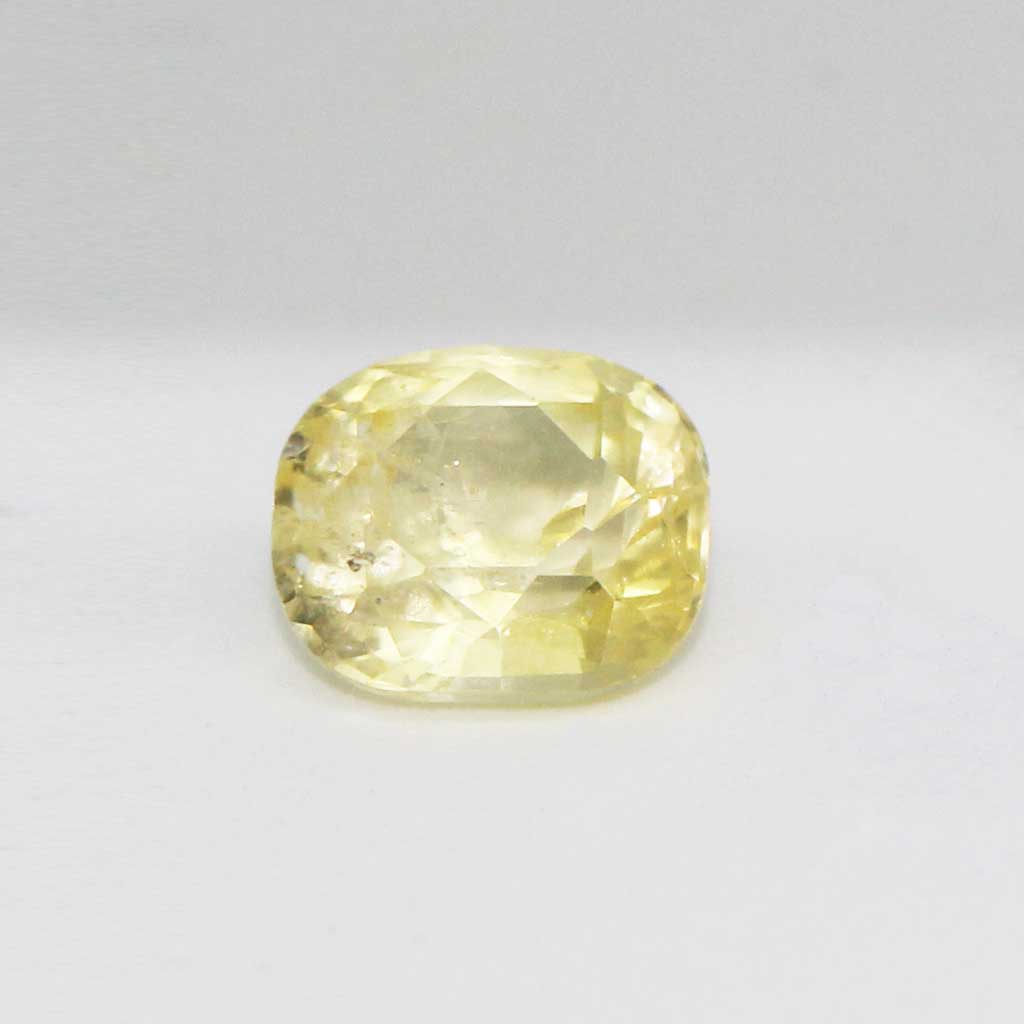Your Cart is Empty
The word carat derives from the Greek kerátiōn which means 'fruit of the carob.' Carob seeds were traditionally used as weights for scales because of their weight uniformity.
In the context of gold jewellery, carat is a measurement of metal purity; the higher the caratage, the purer the alloy. For example, 24ct gold is 100% pure, whilst 18ct gold contains 75% pure gold and 25% other metals.
In the context of gemstones, carat is used as a unit of mass measurement.
Gold is the most malleable element on earth, so pliable that it can be made into sewing thread. In the context of our engagement rings and wedding bands, however, we're dealing with much hardier stuff; we tend not to create our jewels in metal any softer than 18ct gold. Whilst pure gold is yellow, white gold and rose gold are created by including metals like palladium and copper into pure gold alloys.
In the 18th century, platinum's rarity made King Louis XV of France declare it the only metal fit for a king. Since then, it has remained a symbol of prestige. Platinum is 1.4 times the weight of gold and its higher density makes it incredibly durable. Naturally white in colour and thus not susceptible to tarnishing, platinum requires minimal maintenance and so is ideal for day-to-day wear.
Officially the world's most reflective metal, silver was the first metal ever to be used as currency. Though once valued higher than gold by the Ancient Egyptians, silver scores much lower than gold and platinum on the Mohs Scale of Hardness, which is why we don't use it to create our custom jewellery. 10% recycled sterling silver is, however, the basis of our archived filigree collections.
Plating is the process by which a thin layer of gold or rhodium is deposited onto the surface of another metal via a chemical or electrochemical method. Jewellery customised in this way is susceptible to wear but, if looked after correctly, plated jewellery can stay bright and fresh for years.
The name diamond derives from the ancient Greek adamas, which means 'invincible'. These little feats of nature will forever be known and loved for their superlative physical qualities. The hardest known natural substance on earth, the diamond can be scratched only by another diamond, allowing it to retain its lustre for years on end.
Diamonds are usually graded and valued using the system of '4 Cs': carat, clarity, colour, and cut. Equally as important as the others, we believe, is the fifth C; its certificate of provenance.
Though widely considered to be 'white', diamonds span a broad colour spectrum - ranging primarily from brown to colourless. The Gemmological Institute of America has implemented a colour grading system for universal industry reference. Typically, the more colourless a diamond - and thus the lower its colour grading - the higher its value.
Clarity is measured by the relative absence of blemishes, like scratches and nicks on a diamond’s surface or inclusions within it. An inclusion could be any foreign substance trapped inside the diamond as it formed through the centuries, from a mineral crystal to another tiny diamond. The higher a diamond's clarity rating, the greater its value.
From the favoured round brilliant-cut to the soft cushion, the elegant oval and the lesser seen trillion, a variety of diamond cuts have been developed over the years to accentuate natural properties. An well cut diamond will reflect maximum light through its facets, its shape chosen based on the symmetry, shape and size of the rough stone in question.
Carat is the unit of measurement for the physical weight of a diamond. Generally, the larger the diamond, the greater its value. A metric carat is defined as 200 milligrams. Each carat is subdivided into 100 ‘points', allowing precise measurements to the hundredth decimal place.
A diamond's certificate will corroborate its grading and confirm which laboratory rated each of its 4 Cs. The most widely recognised laboratories in the jewellery world are the Gemological institute of America (GIA) or HRD in Antwerp. Certificates from programs such as Canadamark will also tell you about your diamond's provenance, namely its country and mine of origin.
Whether you're inspired by a strand of your loved one's family history, their birthstone or the irresistible colour of their eyes, the technicolour dreamworld of colored gemstones offers endless opportunity for beautiful symbolism.
The sapphire is one of the five 'cardinal gems'. Scoring a resilient 9 out of 10 on the Mohs Scale of Hardness, it's a safe choice for a day-to-day jewel like an engagement ring. Though best known for its deep regal blue variety, the sapphire actually occurs in every colour of the rainbow. Throughout history and across the globe, deep blue sapphires have long been associated with society's upper echelons.
Spanning in hue from fuschia pink to blood orange, crimson red and even mahogany brown, the ruby is the sapphire's fiery cousin. Another variety of the mineral corundum, it's equally as tough and also regarded as one of the five most precious gemstones. Ratnaraj, Sanksrit for ruby, translates to 'king of gems'. Its hardness makes it another clever choice for jewels that are worn every day.
The emerald is the turquoise to green variety of the mineral beryl and the namesake of the historic emerald-cut. Though coveted for its variety of verdant hues and its famous soft spot in Cleopatra's heart, the emerald is a little softer in nature than its cardinal siblings. This means it isn't a hugely popular choice for modern engagement rings unless very small and enveloped in a sturdy rub-over setting.
From champagne to yellowish, cognac and taupe, diamonds with a natural tint are beautiful and often significantly more affordable than diamonds with historically more 'desirable' hues. Meanwhile, the recent introduction of lab-grown diamonds has burst open the door to a variety of bright and colourful opportunities once only available to the rare few with the budget for natural fancy diamonds.
